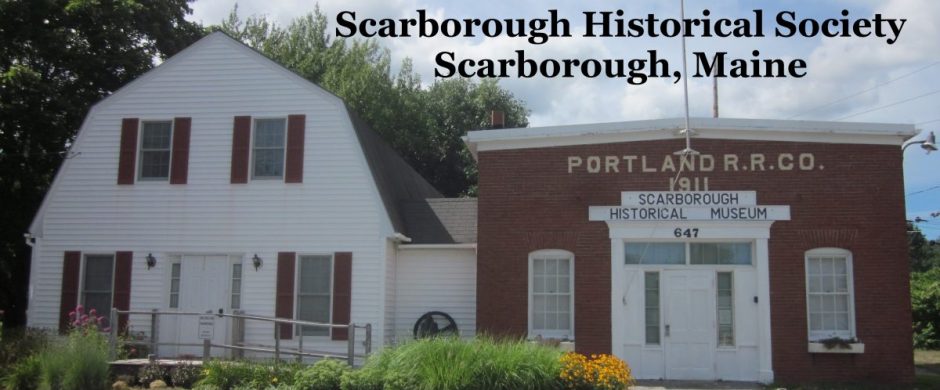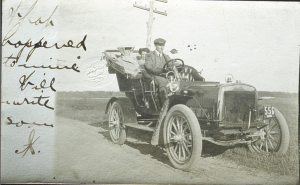Text by Bruce Thurlow
Images from Scarborough Historical Society,
Rodney Laughton and Joseph W. Snow
Automobiles and Fire Trucks
Automobiles
George Robinson of Pleasant Hill was the first year-round resident of Scarborough to own an automobile. It was a 1905 Rambler. As more people acquired automobiles, the increase in the number of automobiles on the road brought an increase in the number of accidents between automobiles and horse-drawn vehicles. In 1910 Scarborough citizens, following Portland’s lead, voted to limit the speed of automobiles to eight miles an hour. By the spring of 1912, an automobile craze had hit the state and the number of cars in Maine had quadrupled. Initially, cars were limited to seasonal use because of poor roads. Few roads were tarred. By 1927, the popularity of the automobile forced Scarborough to address the issue of road repair and maintenance at a town meeting. Twenty-two of the fifty-one articles to be voted on at the meeting concerned roads.(1) Roads in more populated areas had been tarred, but more rural roads had yet to be done. Farmers would keep a horse and wagon for backup in case roads were impassable for an automobile.
Auto racing began soon after the construction of the first automobiles. The first auto race in the United States was November 1895 in Chicago; in nearby Old Orchard Beach, competitive auto racing on the beach began probably as early as 1903.(2) The first recorded formal race was 1911 and the last, 1913. One might assume that some Scarborough residents participated. Scarborough’s Beech Ridge Speedway at the corner of Holmes Road and Two Rod Road was built in 1949 on the site of an old horse track. It was originally a one-third mile clay oval. Finally, in 1985, the clay-oil surface was replaced with a smooth asphalt racing-surface. It is the only NASCAR-sanctioned racetrack in Maine.(3)
Fire Trucks
From 1931 to the mid-1950s, Scarborough was home to D.E. McCann and Sons, a company that built fire trucks. The company was founded in Portland in 1872, and at one time was only one of seven such companies in the country. The factory was constructed in a U-shape and was laid out so that a truck chassis would enter on one side of the building and progress through different production stations (welding, wood, machine, and paint shops) and exit on the other side of the building a finished fire truck ready for delivery. Production stopped in the mid 1950s.(4)
Source Notes

A McCann Fire Truck
1.Susan Dudley Gold, ed., Scarborough at 350: Linking the Past to the Present (Scarborough, ME: Friends of the 350th, 2007), 138.
2.hhttps://www.mainememory.net/artifact/23654
3.https://www.mainevintageracecars.com
4.https:///www.mccannfiretrucks.com



